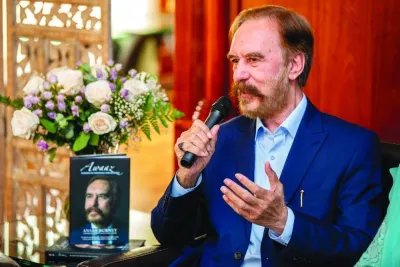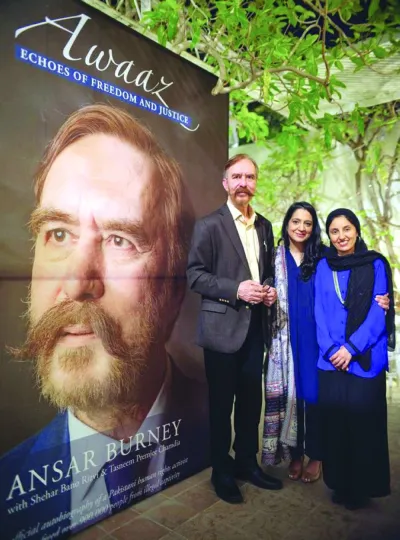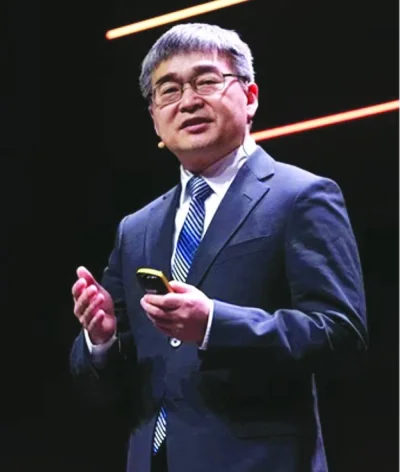Rising from the historic heart of Uzbekistan’s capital, where the domes of the Hastimam complex cast their shadows across centuries, the new Center for Islamic Civilization seeks to bridge the past and present.Conceived on the initiative of President Shavkat Mirziyoyev, the vast cultural and research institution is designed not merely as a museum or archive, but as a statement: that Islam’s legacy in science, art and philosophy must be reclaimed and retold at a time of rising global polarisation.Graceful domes, Timur-era motifs and cutting-edge design converge in the Center’s striking architecture, but its mission reaches far beyond brick and mosaic. With a thousand rare manuscripts and artefacts being repatriated, a Qur’an Hall built around Caliph Uthman’s revered manuscript, and galleries devoted to education and enlightenment, the project aims to reframe perceptions of Islam and to position Uzbekistan at the crossroads of cultural dialogue once more.For Firdavs Abdukhalikov, the Center’s general director, this endeavour is nothing less than “restoring historical justice” — returning lost treasures, rekindling intellectual traditions and offering young Uzbeks a bulwark against extremism through knowledge, critical inquiry and cultural pride.In an exclusive interview with Gulf Times, Abdukhalikov spoke on a host of related aspects for an insight into the marvel that will be the Center. Excerpts:For what was the Center for Islamic Civilization created and why is this the right moment to launch it?The Center for Islamic Civilization was created to honour and revive the outstanding contribution of scientists of Transoxiana, a historical region covering the territory of modern Uzbekistan, to the development of medicine, mathematics, astronomy, philosophy, architecture and art. It has been inspired by the initiative of the President of the Republic of Uzbekistan, Shavkat Mirziyoyev, who in 2017 at the UN General Assembly emphasised the humanistic essence of Islam and the huge contribution Central Asia has had in the development of worldwide civilisation.Very soon the Center for Islamic Civilization will open its doors as a symbol of the New Uzbekistan, a country that attaches special importance to education, inter-civilisational dialogue and enlightenment.What is the vision and mission of the Center?The vision of the Center is to become one of the largest international scientific and cultural centres of Islamic civilization and intercultural dialogue, focused on preserving historical heritage, promoting knowledge and educating future generations.Its mission is to preserve, study and popularise the rich intellectual and spiritual heritage of the region, asserting the humanistic values of Islam: peace, the pursuit of knowledge, tolerance and progress. Particular attention in the Center is paid to the return of spiritual and cultural values lost in different eras.Thanks to the personal initiative and determination of President Mirziyoyev, a large-scale programme was launched to return ancient manuscripts, artefacts and objects of Islamic heritage that are directly related to the history and culture of Uzbekistan. As part of this programme, representatives of the country took part in prestigious art sales at the international auction houses Christie’s and Sotheby’s, while separately holding complex and delicate negotiations with private collectors and antique dealers.As a result of this initiative, inspired by the desire to preserve national memory, a unique collection is returning to its homeland — about a thousand of the rarest exhibits, including ancient manuscripts, works of art, household items and ritual objects.All of them will take their rightful place in the exhibitions, symbolising the restoration of historical justice and the cultural sovereignty of the country.How did the traditional Uzbek aesthetics of the madrasa and modern design elements influence the architecture of the Center, and what does this combination symbolise?The Center for Islamic Civilization was built not just as an architectural structure, but as a symbol of the deep connection between times, culture and spirituality. The traditions of the great era of the Timurids come to life — the time when Uzbekistan became the heart of world science, enlightenment and art. Graceful domes, majestic arches and the finest mosaics of the Center refer to the spiritual and intellectual peaks for which architects and scientists of that era were famous. The entrance portal of the Center is stylised in the architecture of Ulugbek Madrasa, the first higher education complex in the East, symbolising the continuity of the Uzbek scientific and spiritual tradition.The location of the Center is of particular importance. It is deeply thought out and symbolic. It rises at a unique point in Tashkent, where two worlds converge: on the one hand, the Hastimam ensemble, the sacred heart of ancient Tashkent, which preserves the spiritual heritage of Islamic civilisation, including the mausoleum of Abu Bakr Kaffal Shosha and unique Qur’anic manuscripts; and on the other hand, the silhouette of New Uzbekistan, rapidly developing, modern, and open to the world.Thus, the very appearance and location of the Center embody the dialogue of eras: from sacred historic sources to the future, from tradition to innovation, from spiritual memory to new horizons of knowledge. The idea to create such a Center belongs to the President of the Republic of Uzbekistan — it was born as an expression of the deep will to preserve, comprehend and pass on to the world the unique heritage of the Uzbek people, which has become part of the civilization of the entire planet.How will the Center rethink the global perception of Islam as a religion of peace and enlightenment, and why is this necessary today?By emphasising the historical role of Islam in the development of science, philosophy and the arts, the Center will challenge the stereotypes that associate Islam with conflict. We will promote the narrative of Islam as a driver of enlightenment and innovation, which is crucial in times of growing polarisation and misinformation about religion. What we are aiming for will not necessarily happen overnight, but it is our bold and ambitious goal.What role will the Samarkand Kufic Qur’an play in the mission of the Center?In the Qur’an Hall, a special place will be given to the Qur’an of Caliph Uthman — one of the oldest and most revered manuscripts of the Islamic world. This shrine has a special significance not only for Muslims, but for all mankind as a monument of spirituality and written culture.It will be surrounded by a unique exposition consisting of 114 Holy Qur’ans, symbolising the 114 surahs (chapters) of the Great Qur’an. These manuscripts are directly related to the cultural and spiritual heritage of Uzbekistan. They cover different historical epochs — from the Abbasids, Samanids, Qarakhanids, Timurids, Baburids to the times of the late Khanates.Each of the Qur’ans presented is not just a book, but a real artistic and spiritual masterpiece, reflecting the high development of calligraphy, book art and spiritual culture of its time. This exhibition vividly demonstrates the important role Uzbekistan has played over the centuries in the preservation and transmission of Islamic knowledge and spirituality.How will the Center’s museum, with its five thematic galleries and monumental fresco, create a unique experience for visitors?The museum was designed to take visitors on a journey through time: from pre-Islamic Central Asia to the Third Renaissance, i.e. to the present day. Each gallery immerses visitors in a corresponding atmosphere with the help of multimedia, artefacts and interactive displays. The central hall with the Qur’an of Uthman is surrounded by galleries on science, education, art and architecture, culminating in a contemporary vision of our New Uzbekistan.What strategies will the Center use to engage youth and local communities in Tashkent to become a vibrant cultural center?Education is the central pillar of the Center — to educate, inform and inspire current and future generations. Initiatives include, for example, the creation of a Children’s Museum. Its ideas will be communicated to our entire community through school partnerships, creative workshops, interactive digital content and youth-focused manuscript restoration labs. They will be complemented by public lectures, social events and cultural programmes that are designed to make the Center a daily part of life in our capital and beyond.How will the Center fight extremism and what effect do you hope to achieve through your educational and cultural programmes?By promoting critical thinking, historical literacy and the humanistic roots of Islam, the Center will directly confront contemporary ideologies that are based on ignorance and separatism. This is not the way of Islam. The emphasis on enlightenment over dogma, and on the truth of history over distortion, are aimed at instilling in young minds a guaranteed protection against destructive radicalism.How will the Center be financed in the long term — through state support, private sponsorship or other means — and what challenges do you foresee?Initial funding for the establishment of the Center has been provided by the State, with continued support from the government, philanthropic foundations, international partnerships and expected museum revenues. Challenges include maintaining international collaboration and increasing private sector support without compromising the academic independence of the Center.What are your plans for exhibitions after the opening and what major event do you see as the next milestone?Modern cultural projects are increasingly using interactive and mobile formats, and we plan to actively use this potential not only within the framework of exhibitions, but also in educational and awareness-raising activities. Particular attention will be paid to digital solutions — virtual expositions, multimedia platforms, online courses and applications that allow us to involve a wide audience, primarily targeting young people. After all, Uzbekistan is a country of young people, which means that it is our main country. The audience is precisely the younger generation, which will not only preserve, but also develop the rich cultural heritage of our country.
























